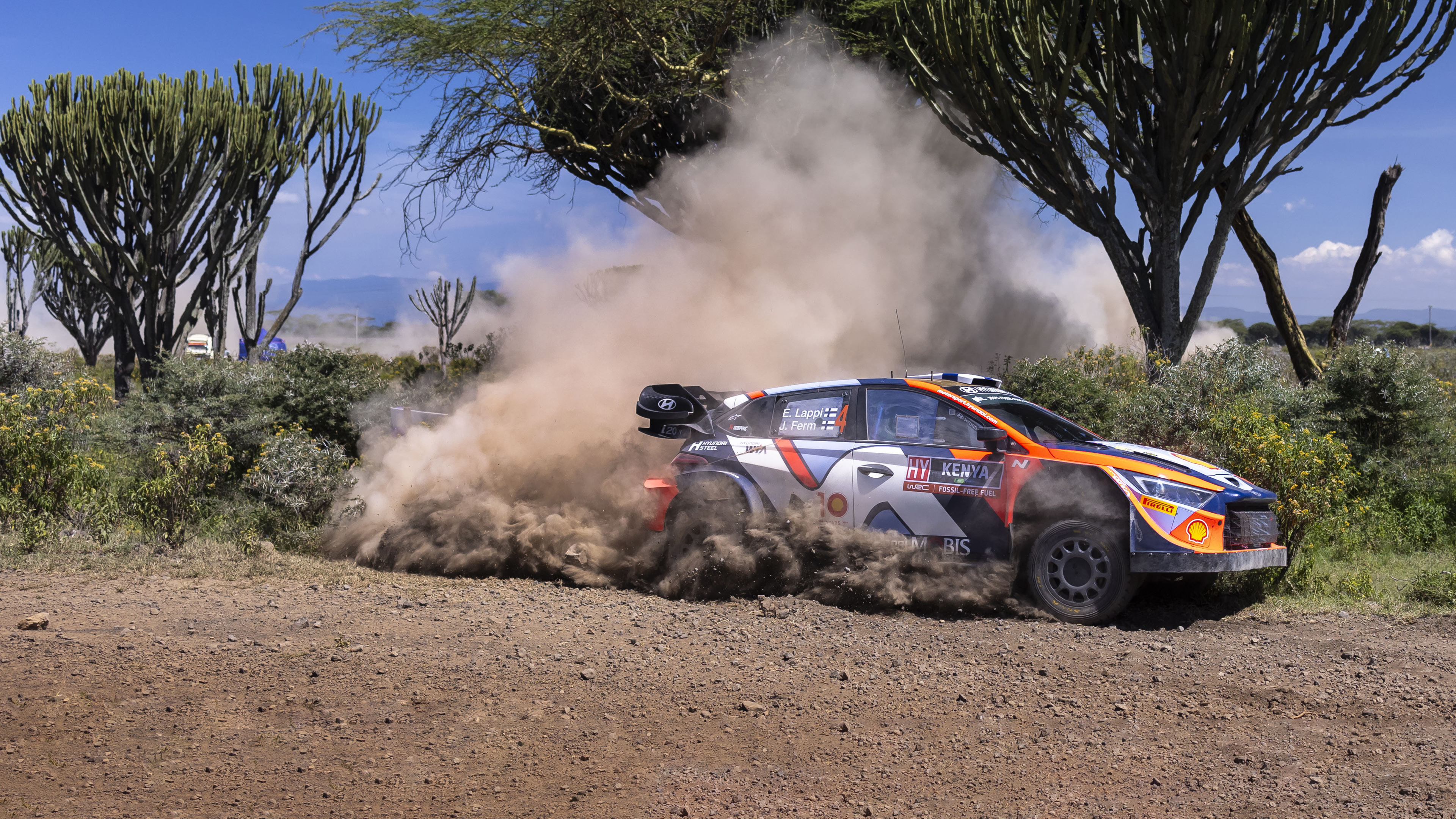
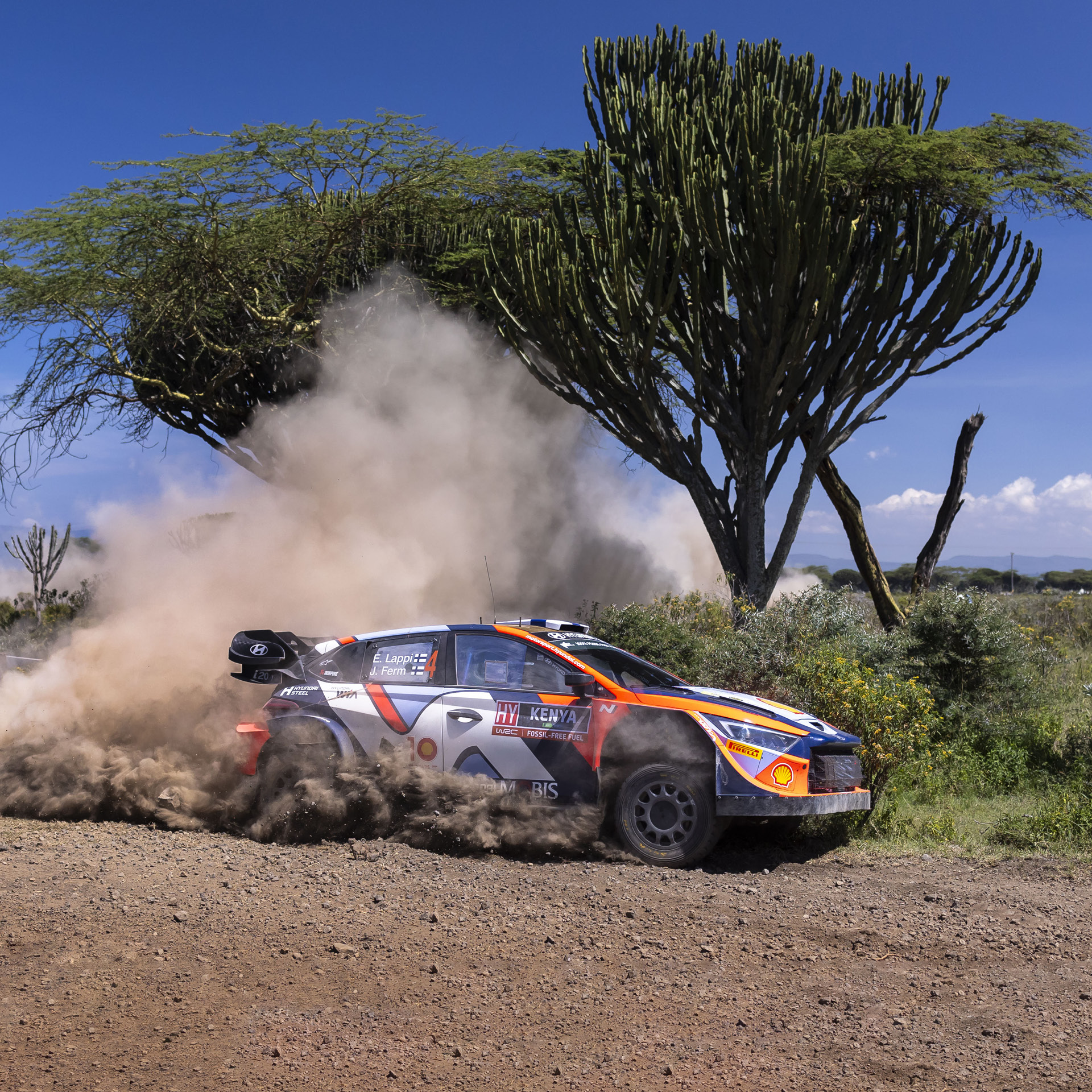


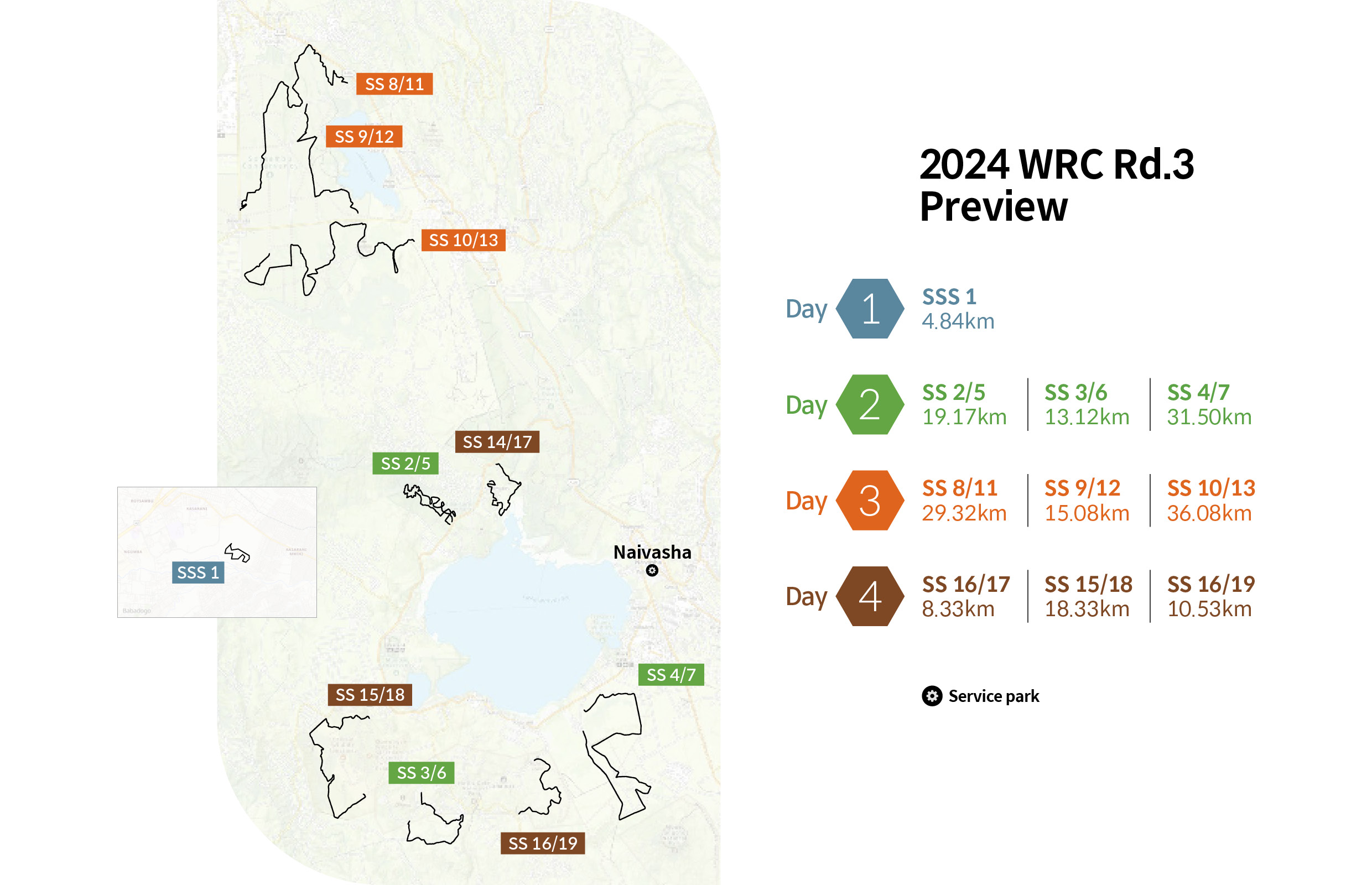
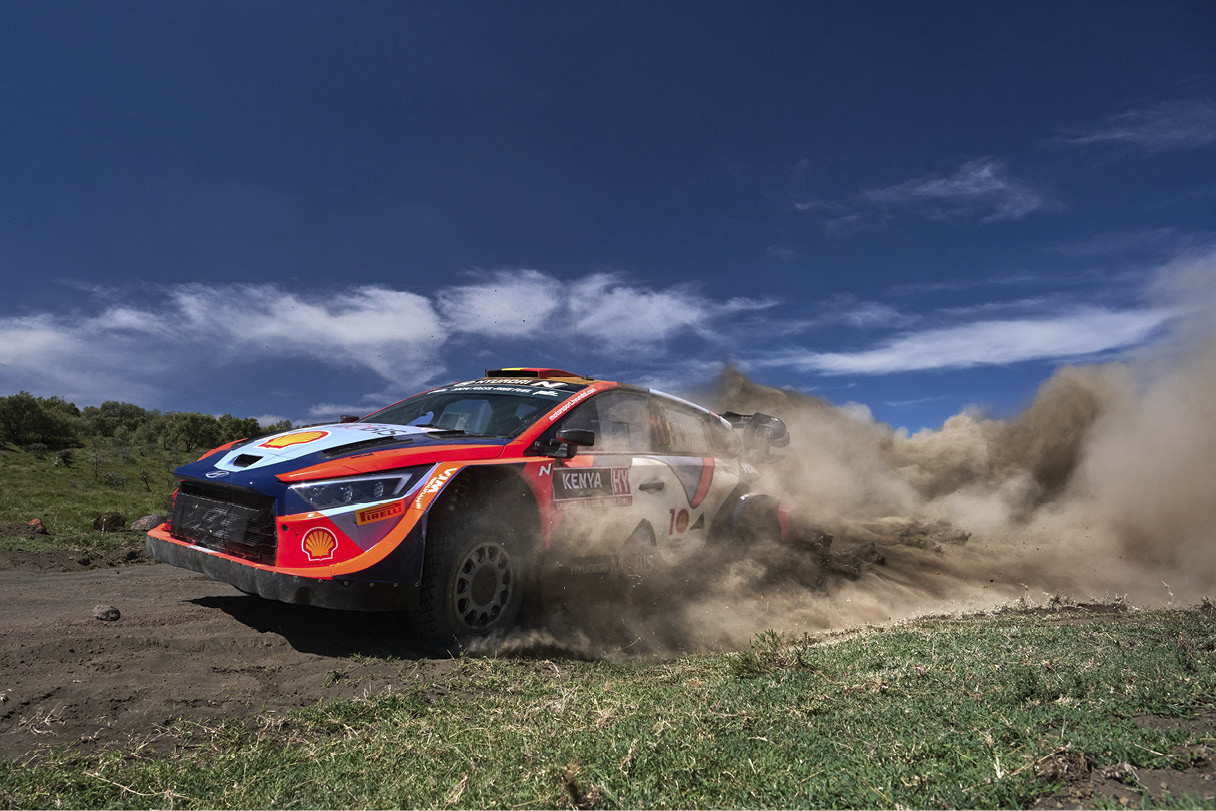
After a six-week break following the second round in Sweden, the WRC headed south across the sea. The third round unfolded in the rugged terrains of Africa, a survival race contrasting the Scandinavian snowfields. The Kenyan Safari Rally started with the 4.84km Kasarani SSS1 outside Nairobi, spanning a total of 19 stages and 367.76km, marking the longest distance since the Safari's return to the WRC in 2021.
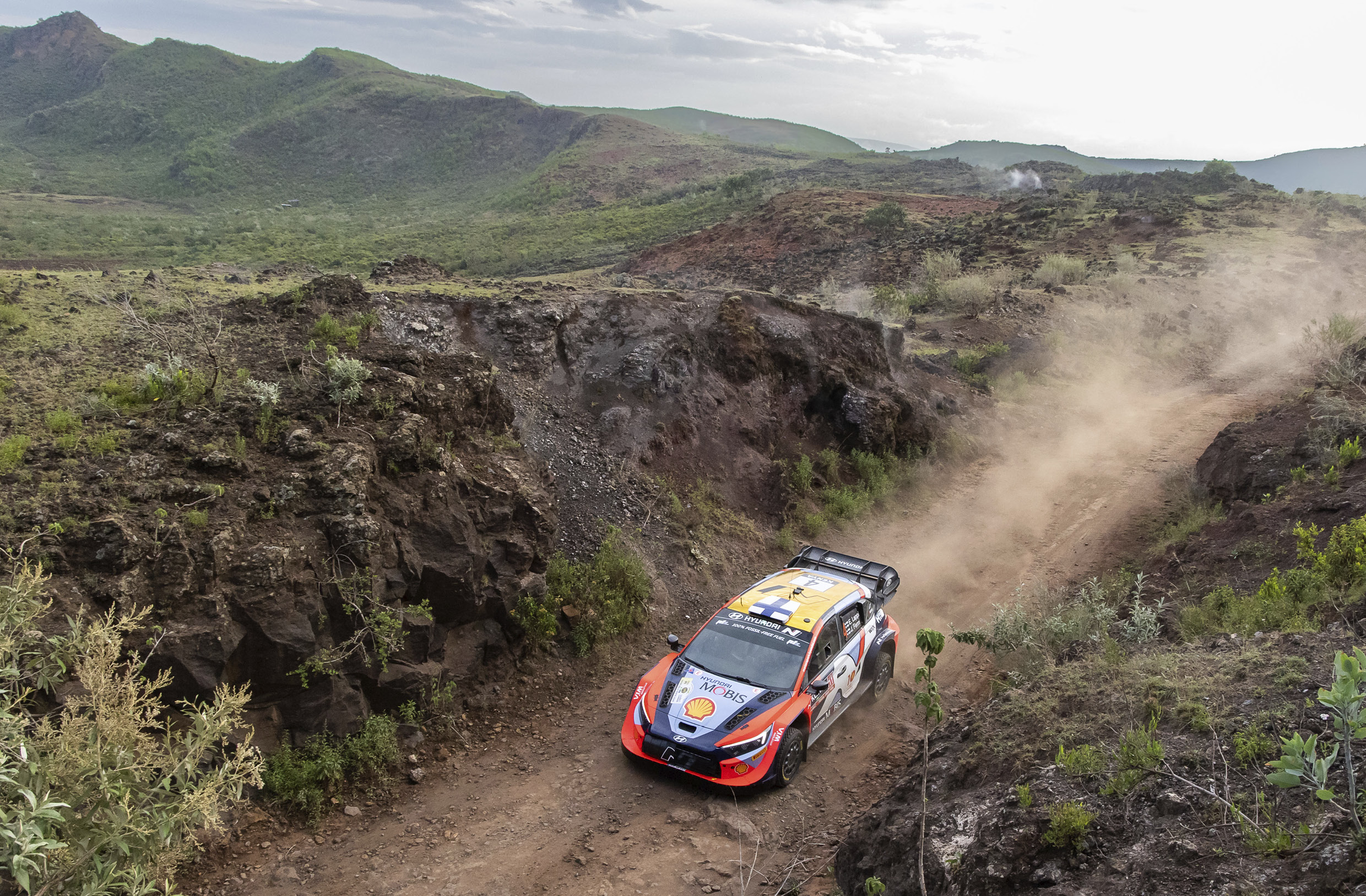

As the name 'Safari' suggests, this rally is perhaps the closest to the wild among the WRC hosts. With indistinct paths and rocky sections that could damage the car, speeds must be reduced to nearly running pace. The terrain, known as fesh-fesh, traps the rally cars' traction, rendering them immobile if they slip. This fine dust scatters everywhere, obscuring visibility, and quickly turns into mud with rain, adding to the myriad of dangers, including unpredictable wildlife. These elements contribute to the allure and challenge of the Safari Rally.
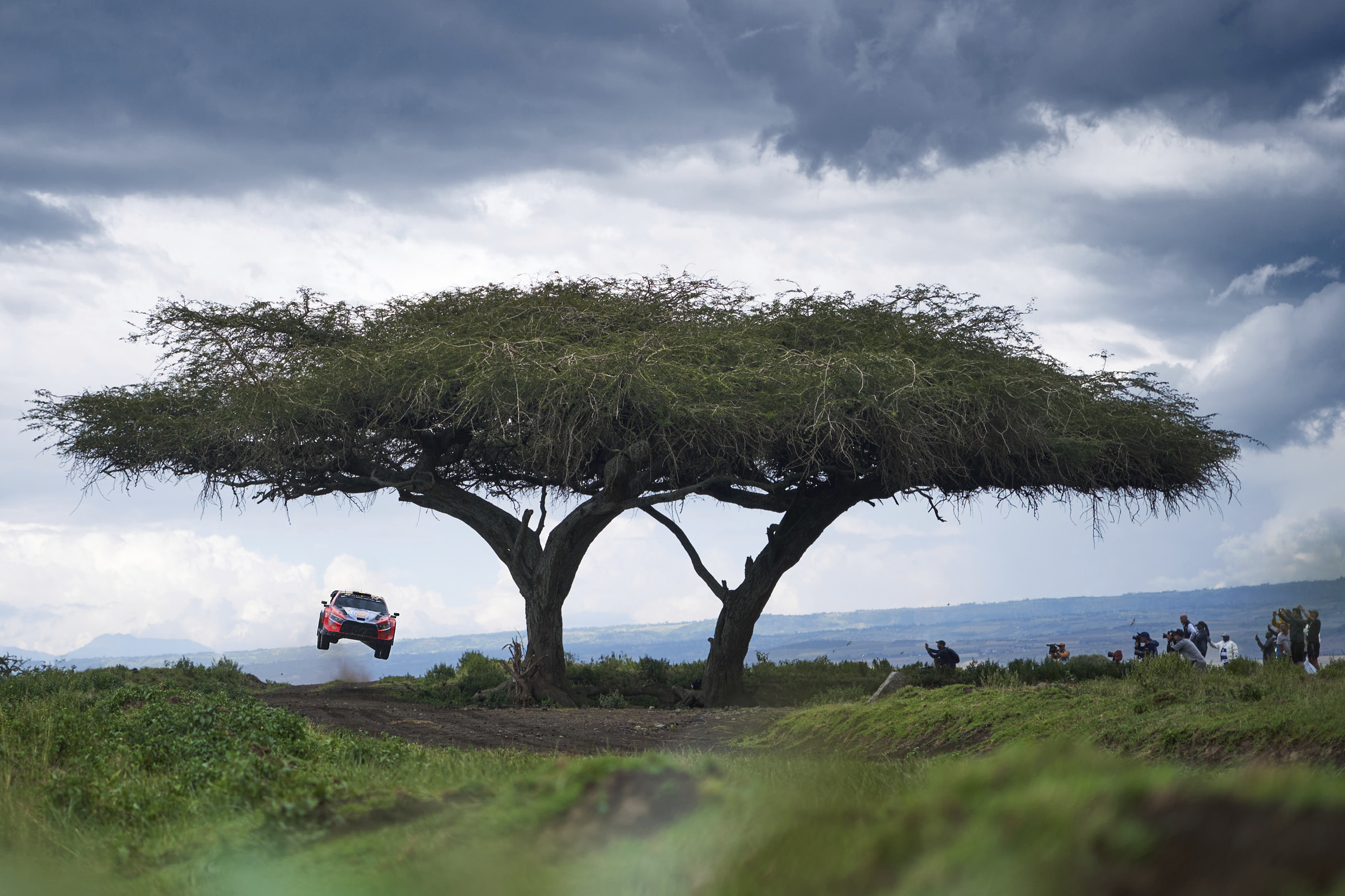
The history of the Safari Rally began in 1953 as a coronation event for Queen Elizabeth II. Elizabeth, then a princess, became queen unexpectedly during an overseas tour in 1952 after the death of her father, King George VI, while in Kenya, a British protectorate at the time. The following year's event was organized to commemorate this, and by 1974, it had been renamed - from East African Safari Rally to the Kenya Safari Rally, becoming a hallmark sporting event in Kenya. Initially covering as much as 5,000km, the rally was later shortened to just over 1,000km, but the challenges remained. Its recent revival still positions it as one of the toughest in the WRC, despite being shortened to around 360km.
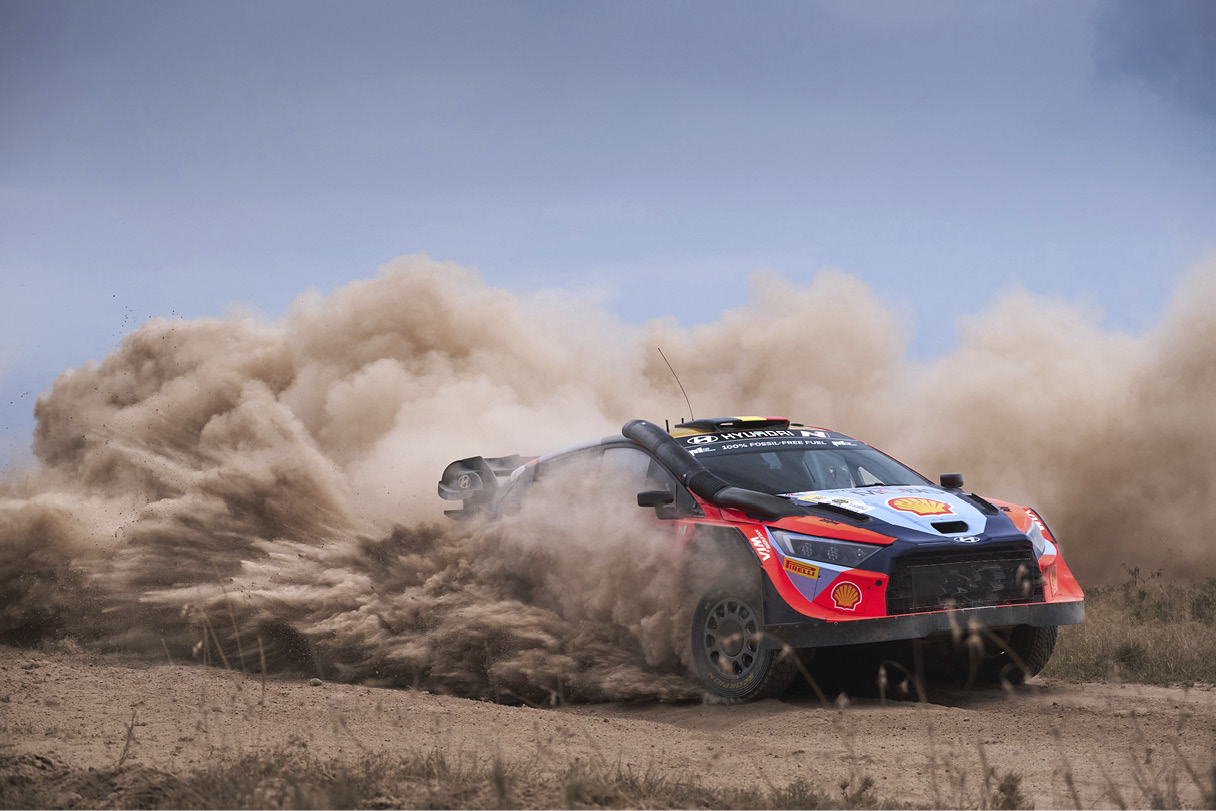
This year's event moved from June to March, requiring preparations for the African rainy season's perils. The rains of the Safari can create sudden watercourses, posing operational challenges. To prevent engine flooding, each team prepared snorkels—pipes extending from the bonnet along the A-pillar to the roof, akin to snorkels used in swimming, ensuring no water enters the engine. Tires from Pirelli included the Scorpion Pad and a soft compound option.
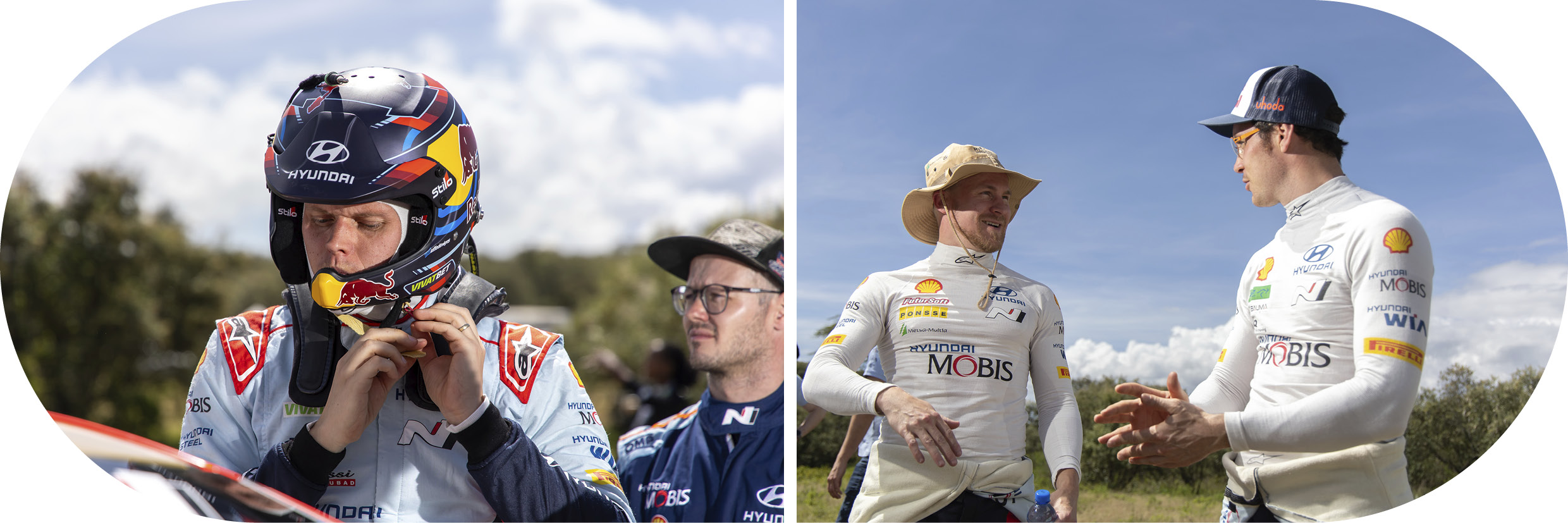
This race saw 29 entries, including 9 in Rally1 class and 14 in WRC2. With back-to-back wins, the Hyundai World Rally Team (Hyundai team) kept the same driver lineup from the Swedish Rally. Leading the championship after winning the opener, Thierry Neuville, along with Ott Tänak and Esapekka Lappi, were on the list.
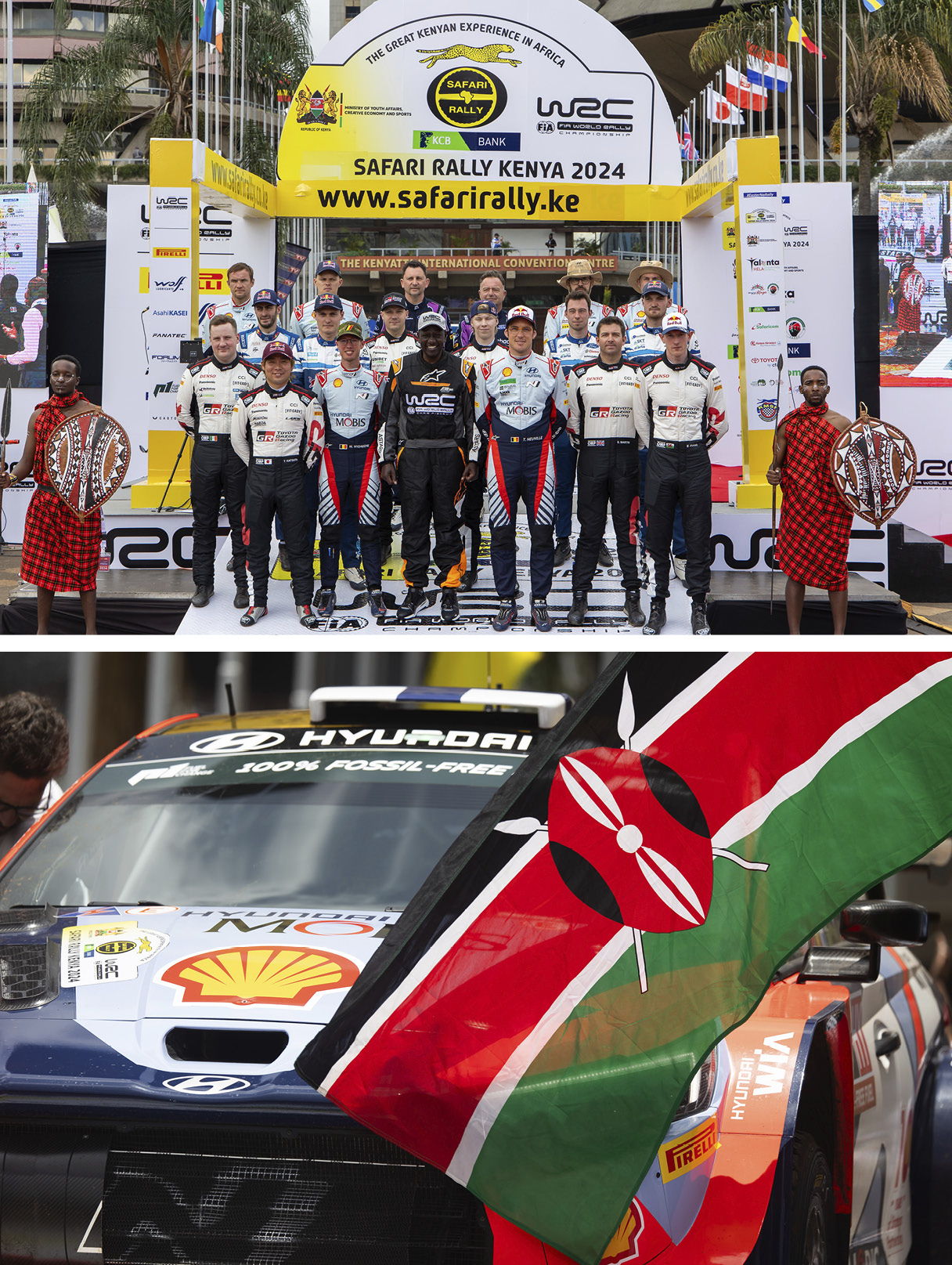
Toyota, like Hyundai, maintained its driver lineup—Elfyn Evans, Takamoto Katsuta, and Kalle Rovanperä. With extensive experience in the Safari, Toyota has shown consistent results. Each of their drivers has reached the podium twice in this venue. Rovanperä, after announcing a break following his championship win last year, made a comeback in this rally since last year's Acropolis Rally in Greece.
M-Sport Ford also saw promising performances, particularly from Adrien Fourmaux and the up-and-coming Grégoire Munster. Additionally, private entrant Jourdan Serderidis reversed his retirement decision to participate, marking his return since last year's Acropolis Rally.
The WRC2 category anticipated intense competition. Led by points leader Oliver Solberg, last year's winner Kajetan Kajetanowicz drew attention. Hyundai's Nicolas Ciamin and Charles Munster debuted in WRC2, with Diego Domínguez participating in a Citroën C3. The only local competitor in WRC3 was last year's African Junior Champion, Hamza Anwar.

Participants faced difficulties during the pre-rally reconnaissance (recce) due to rain, but the course mostly dried up afterward. A test run was conducted on the 5.4km stage north of Lake Naivasha on Wednesday. On Thursday, March 28, in the presence of President William Ruto, the rally commenced from SSS1 set up northeast of Nairobi's International Convention Center.
The course, set on a hill with a clear view of the city, has become a symbol of the Safari Rally. The WRC2 drivers started the head-to-head racing first, followed by the Rally1 competitors, with Neuville being the fastest in SSS1, followed by Tanak, Rovanpera, Katsuta, Lappi, and Evans.
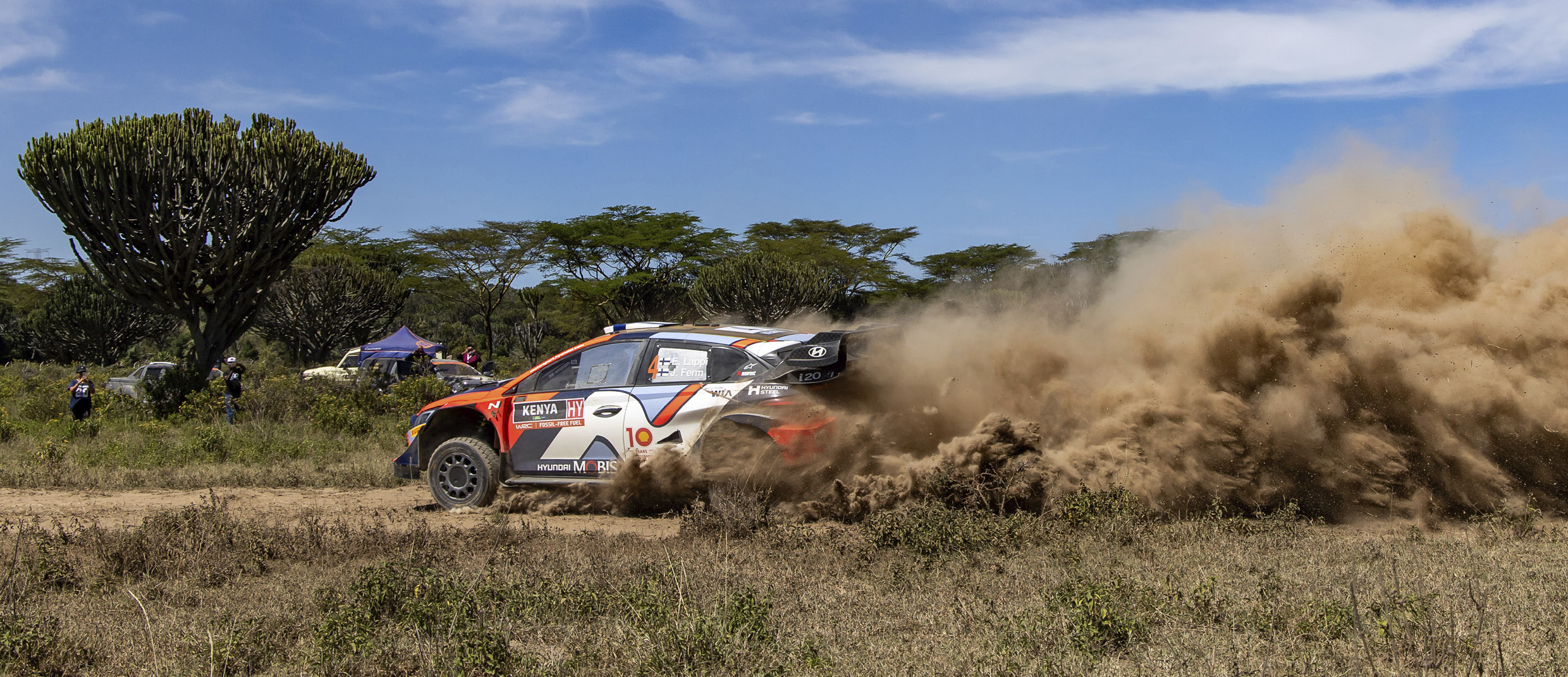
On Friday, March 29, the competition continued over a 127.58km section, repeating morning and afternoon through the 19.17km Loldia, Geothermal, and 31.5km Kedong stages. Neuville, who started first and took on the role of cleaning the track, completed Loldia in 14 minutes 1.6 seconds. Rovanpera claimed the top time. After the drive, Neuville noted, "This first stage reminds us of how tough this weekend will be. I was struggling with a lot of understeer, and on the downhill there was massive cleaning. It's very difficult." Meanwhile, Lappi and Tanak closely chased Rovanpera.
Rovanpera continued to impress in the following stages. As the defending champion and with prior Safari wins, his non-full season participation this year advantaged him with a favorable starting position (seventh). Hyundai drivers generally struggled with significant understeer, and Lappi managed to finish the stage with slightly damaged tires.

In SS3, Neuville faced challenges as his right rear tire burst, taking the fender with it. An early-stage damaged tire cost him nearly 20 seconds in this stage alone. Lappi and Tanak maintained a gap of about 3 seconds from Rovanpera, with Katsuta rising to fourth. In WRC2, Solberg, vying for the lead with Greensmith, fell in rankings due to a tire change. Rovanpera expanded his lead in SS4, putting 15.1 seconds between him and Lappi, and 16.8 seconds from Tanak. Neuville, racing through dust and debris with goggles and a mask, dropped to sixth as his hybrid system malfunctioned.

After a 40-minute service break at lunchtime, the drivers tackled three more stages under increasingly cloudy skies. Hyundai focused on repairing Neuville's Rally1 car. Meanwhile, Lappi's car stopped at the 9.8km mark of SS5 due to a burst transmission, unable to continue.
Hyundai's misfortunes lasted further; In SS6, Tanak collided with a rock on a left corner, severely damaging the suspension. Tanak, who had taken over second place from Lappi, retired from the race, allowing Toyota to dominate the top rankings. Neuville became Hyundai's only hope. By the end of Friday, Rovanpera led, followed by Evans and Katsuta, with Neuville in fourth place, 6.5 seconds behind third-place Katsuta and over a minute from the leader Rovanpera.
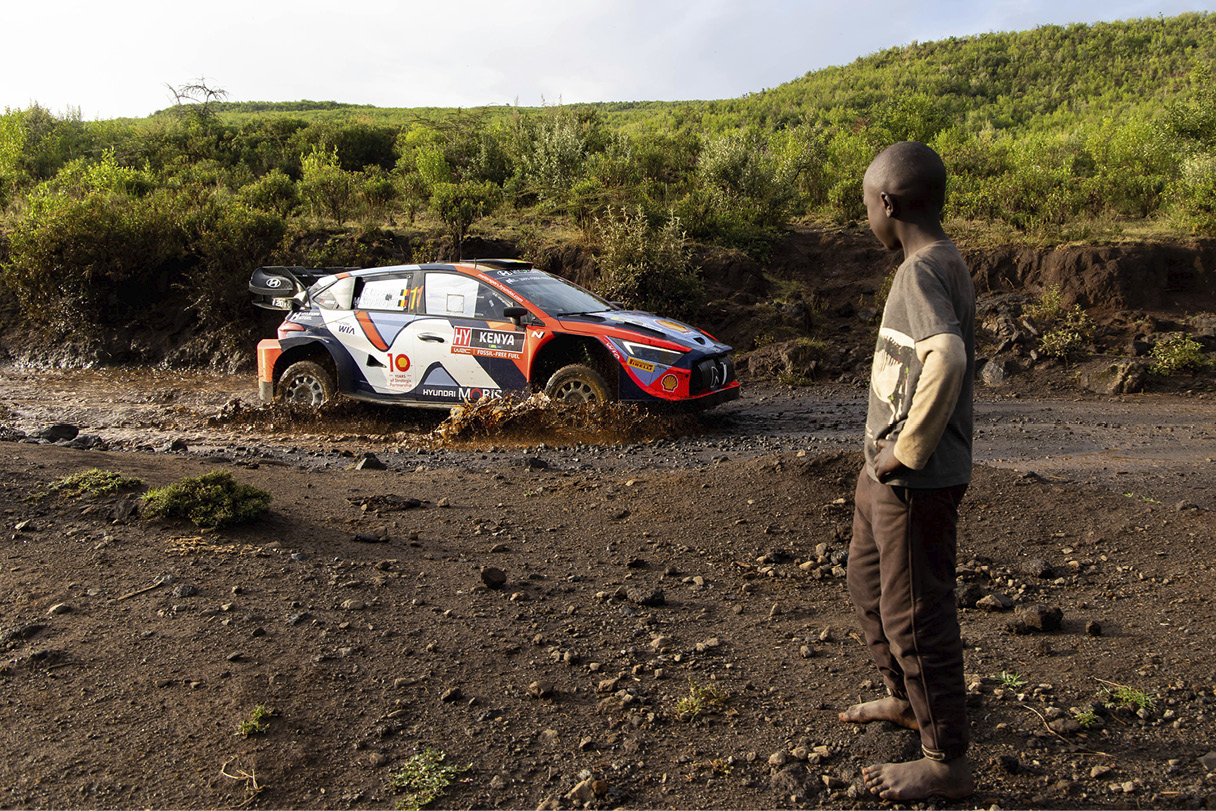
On Saturday, March 30th, competition spanned over 160.96 km across six stages, including the 29.32 km Saysambu, the Elmenteita, and the Sleeping Warrior, repeated as SS8 through SS13. This day was not only the longest of this competition but also included the longest stage, the Sleeping Warrior, measuring a lengthy 36.08 km. Early morning rain left parts of the track mixed with mud puddles and waterlogged sections.

In the opening stage SS8, Katsuta was the fastest. Tanak, who had retired the previous day, had repaired his car overnight and returned to the course, only to stop midway due to a loose bonnet. However, even more unfortunate was Evans, who wasted nearly 1 minute and 50 seconds changing a punctured tire, pushing him down to fifth overall and making Neuville third place.
In SS9, Tanak faced another issue soon after starting when his intercom failed. Nonetheless, despite the continuous setbacks, his co-driver Järveoja showed seamless cooperation by using hand signals to convey pace notes to avoid a worse outcome. Tanak managed to complete about 15 km receiving only hand signals and finished the stage just 15 seconds behind Neuville, who had set the fastest time for the stage, closing the gap to second-place Katsuta to only 4.8 seconds.
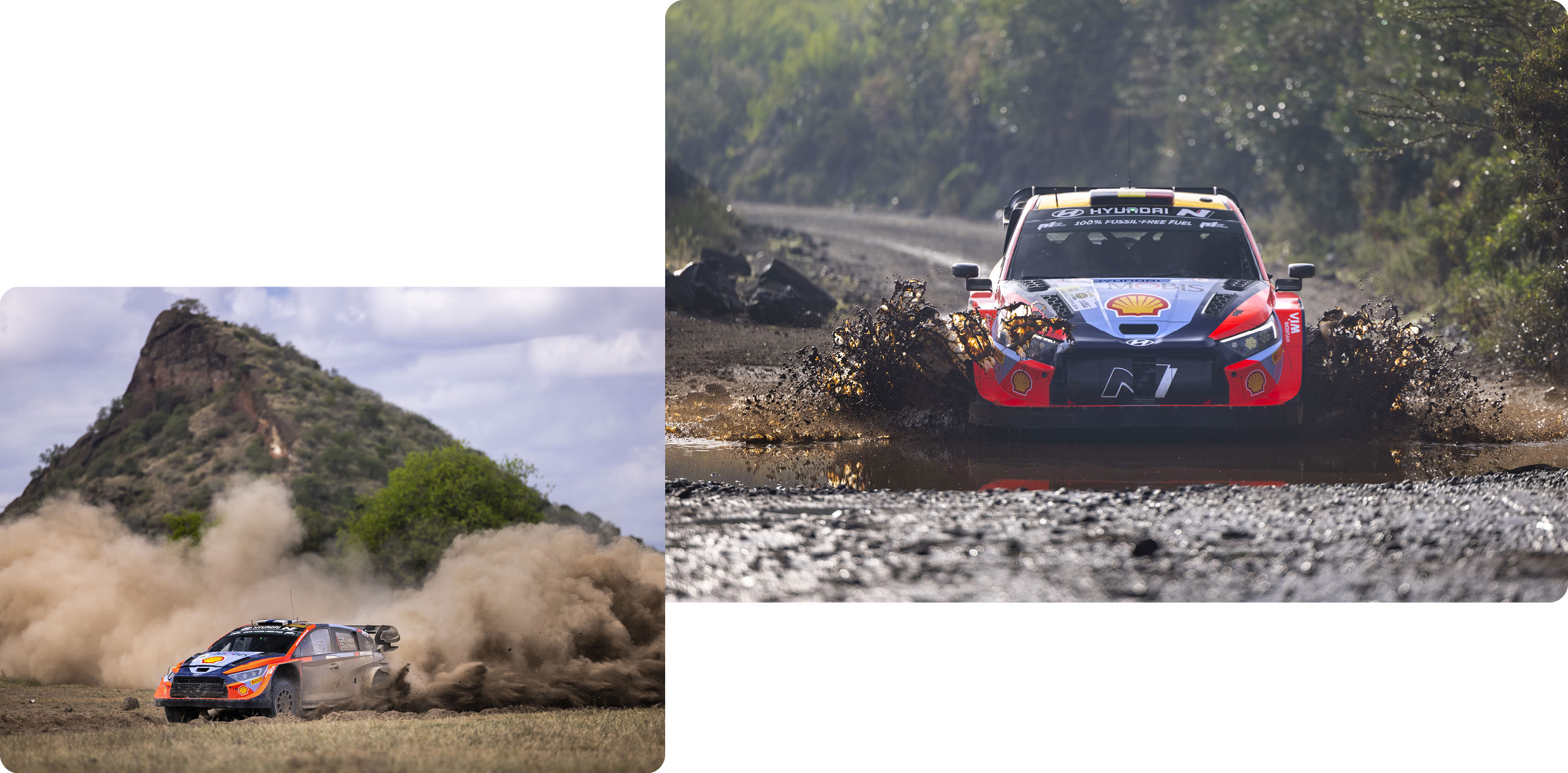
In SS10, Rovanpera set a dominating pace, finishing 24.8 seconds ahead of second-place Neuville. Many competitors struggled with the scattered mud pits. A punctured tire for Katsuta allowed Neuville to move up to third overall, with Rovanpera leading him by 1 minute 28 seconds. Lappi experienced punctures in all three morning stages, enduring a challenging time.
After a lunchtime service, the drivers tackled Saysambu (SS11) again. Neuville, holding second place overall, had to slow down due to engine issues, making it virtually impossible for Hyundai to reach the podium as the long afternoon stages remained. Evans won SS12, and Tanak posted the fastest time in SS13.
By the end of Saturday, Rovanpera was still leading overall. Katsuta had returned to second place, and Evans had climbed to third. Evans, who was fourth after completing SS12 and had a 42.7-second gap from Fourmaux, lost time again in SS13 due to another tire puncture, pushing Neuville down to fifth. Behind him were WRC2 competitors Greensmith, Solberg, Kajetanowicz, with Serderidis and Tanak barely making it into the points.
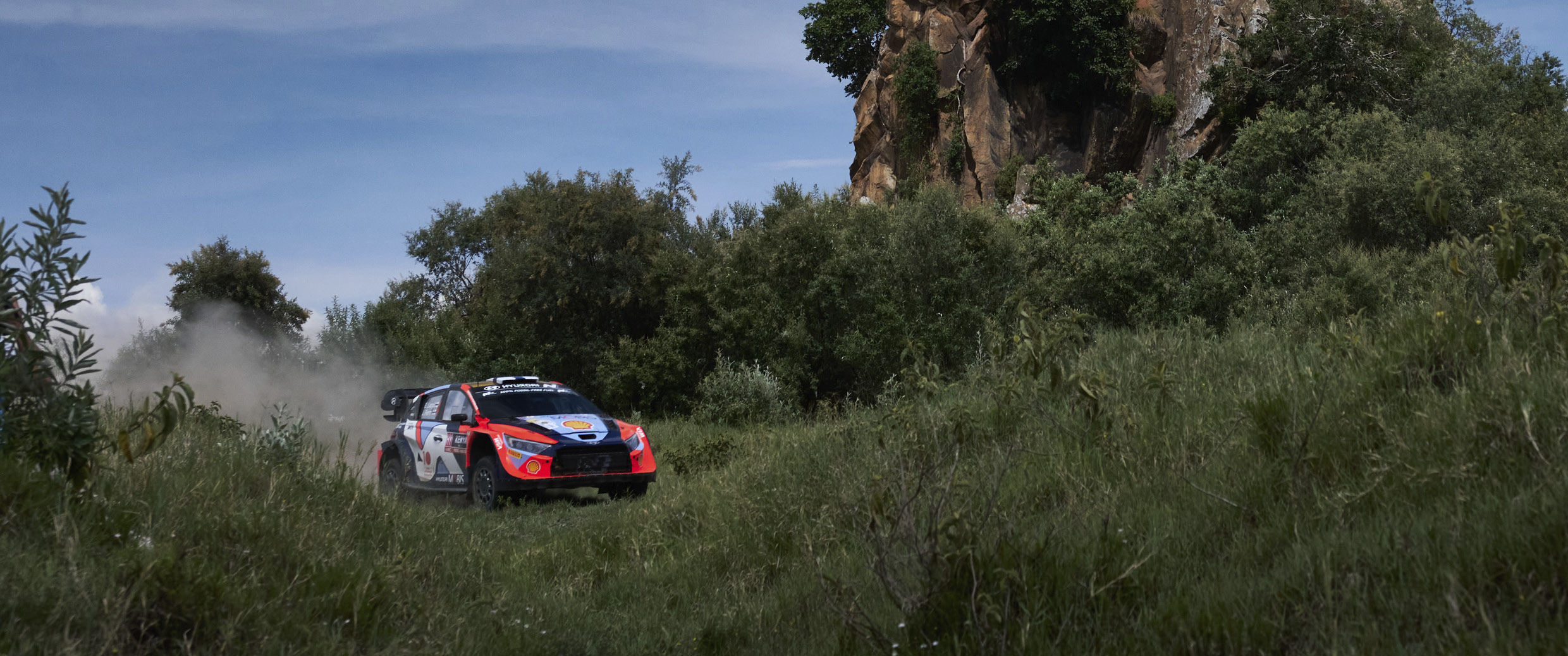
March 31st, Sunday, marked the final showdown of the rally. The day kicked off with an 8.33 km stage at Malewa, followed by 18.33 km at Oserengoni, and 10.53 km at Hell’s Gate, looping to total 74.38 km. This was a shorter course compared to the previous day. According to new regulations effective this year, the starting order for Rally1 was reversed based on the standings up to Saturday. Although it did not rain on Sunday, residual mud puddles from Saturday's downpour remained on the course.
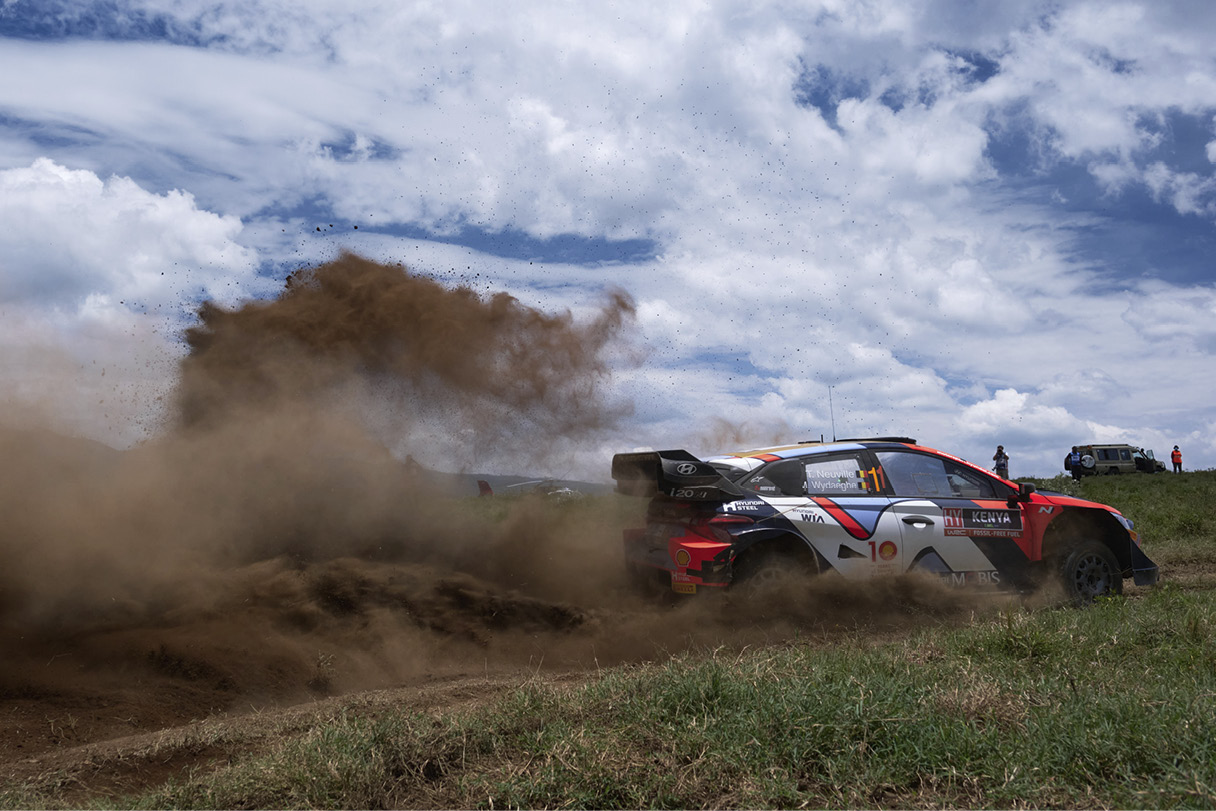

Drivers not faring well up to Saturday had everything to gain on this final 'Super Sunday'. Neuville took the lead in the opening SS14, followed by Tanak and Lappi. Evans clocked the top time in the subsequent SS15 and SS16. Tanak reclaimed the fastest time in the second run of SS18 at Oserengoni, with Neuville and Lappi following.
While the leaders opted for a conservative drive to secure their spots and points up to Saturday, the Hyundai trio went all out for extra points on Super Sunday for a maximum of 7 points. SS19 at Hell’s Gate, which also served as the Power Stage, offered up to 5 additional points for the top five times, where Neuville was fastest, followed by Tanak and Lappi, showing a remarkable finish.
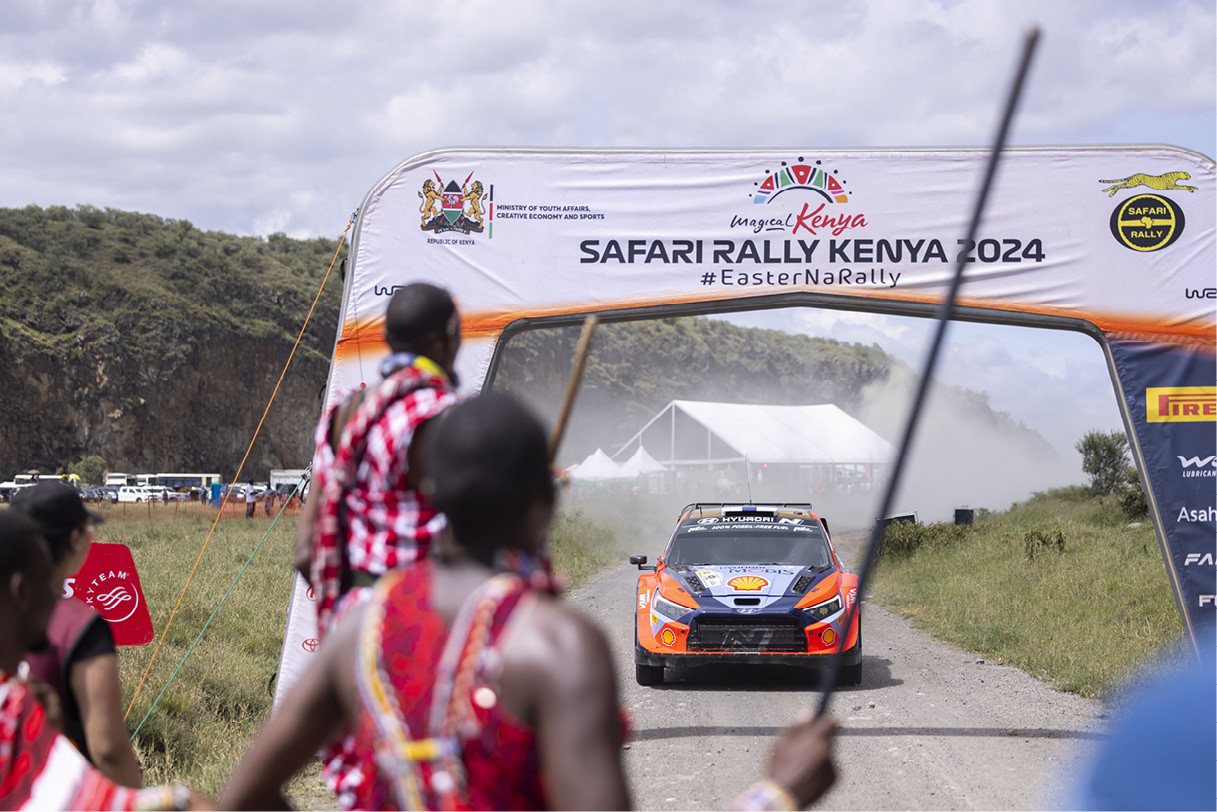
However, the victory was clinched by Rovanpera, marking his first win of the season and his second total in the Safari Rally. Katsuta followed in second place, and Fourmaux secured the last podium spot, marking his second consecutive podium appearance, emerging as a new hope for M-Sport Ford. Evans finished fourth, while Neuville rounded out the top five. In the WRC2 category, Greensmith won his class and finished sixth overall, followed by Solberg. Tanak managed to improve to eighth place by the end of the rally, climbing two spots.
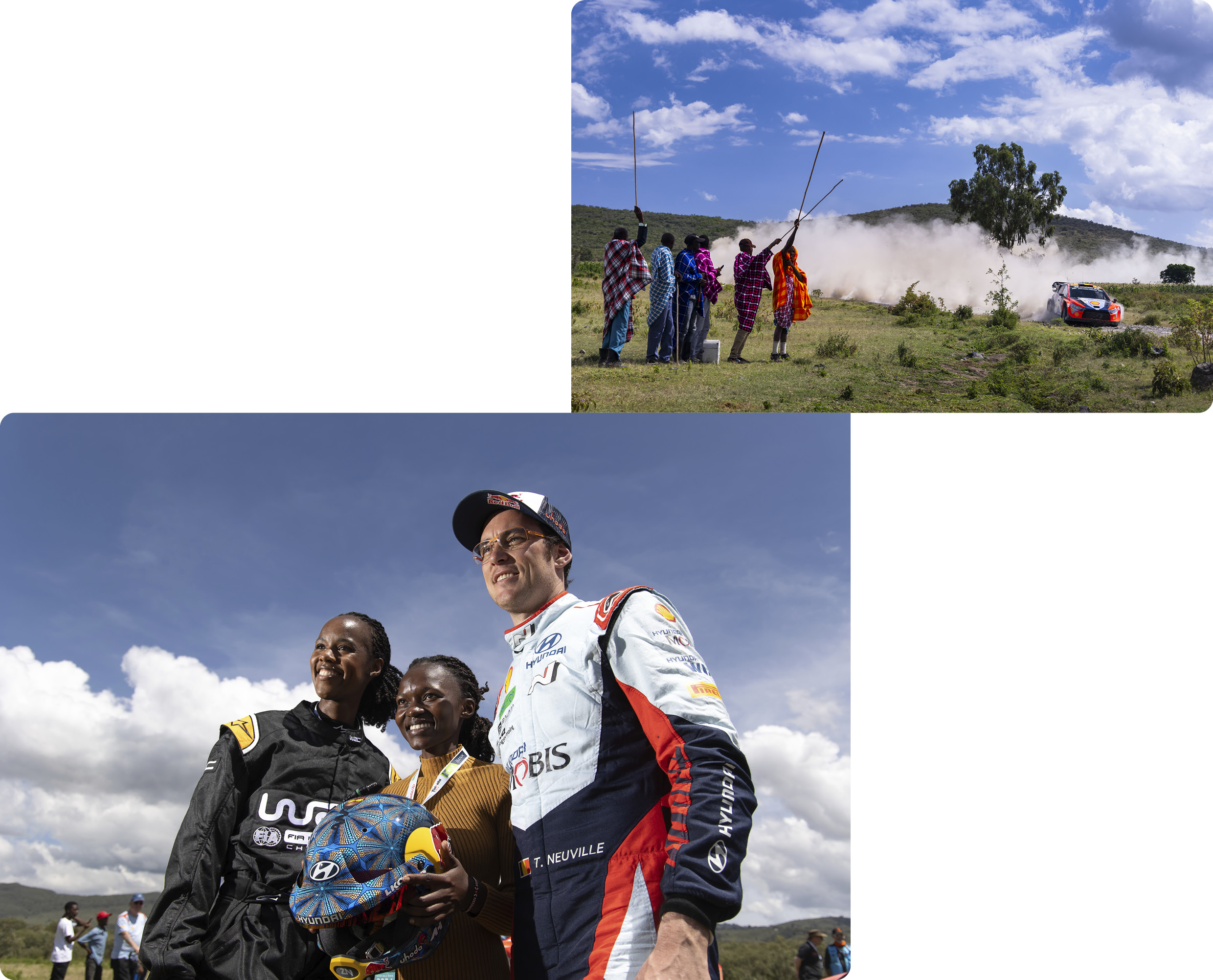
Hyundai, though failing to reach the podium, maximized their scoring potential using the new points system. On Sunday alone, Tanak scored 7 points and Neuville 6, with additional points from the Power Stage bringing their total to 12 extra points each. As a result, while Toyota led in the manufacturers' championship points, Neuville continued to lead in the drivers' standings.
After completing their first gravel rally of the season in Safari, the racers will next head to Europe. The fourth round of the season, the first tarmac rally, will run from April 18th to 21st around Zagreb, Croatia, followed by a series of European gravel rallies in Portugal, Italy, and Poland.
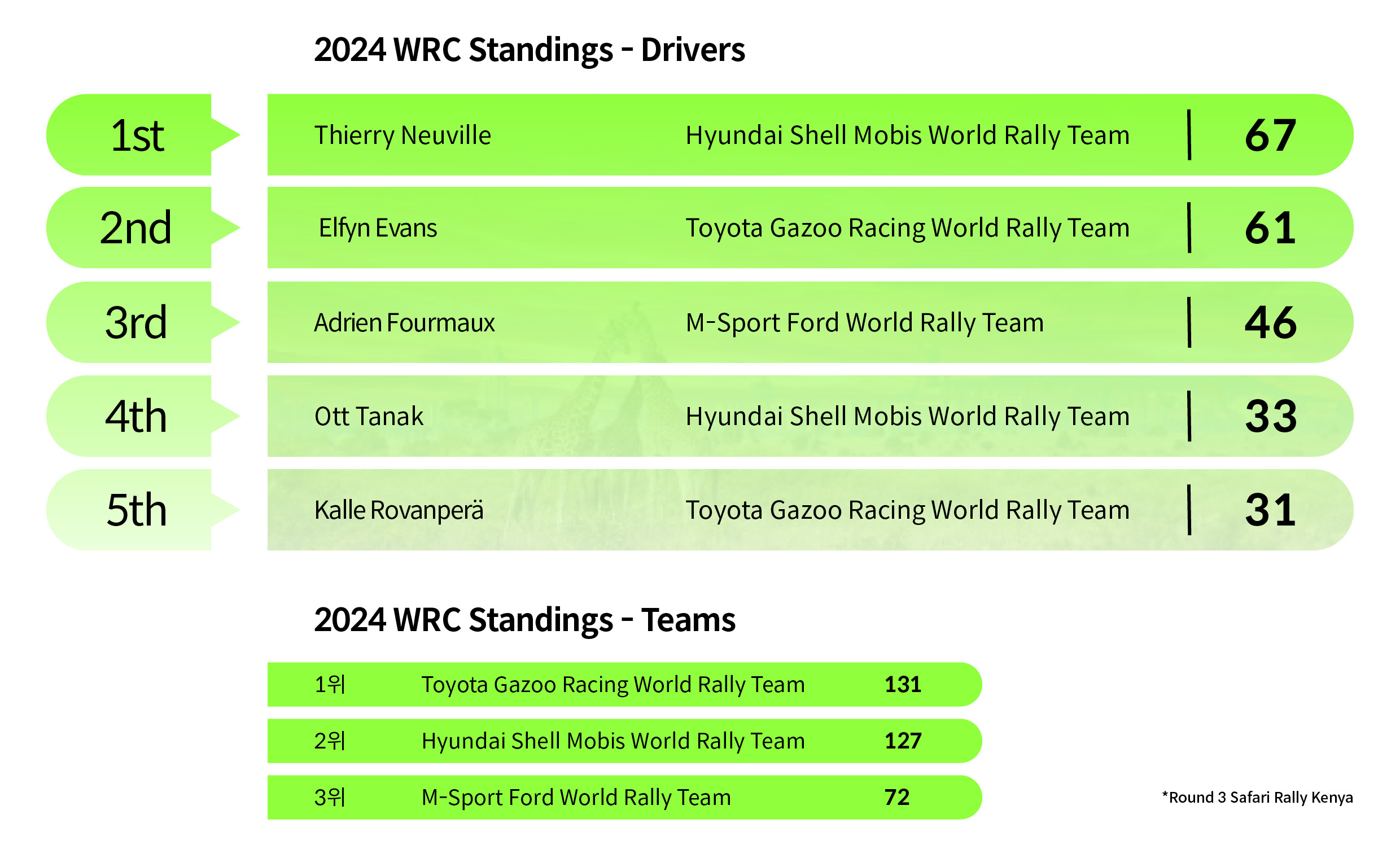
By Su-jin Lee
In 1991, Su-jin Lee’s passion for cars led him to enthusiastically write letters to the newly launched Korean car magazine Car Vision. This unexpected connection led him to start his career as an automotive journalist. He has served as editor and editorial board member for Car Visionand Automobile Life, and now works as an automotive critic. While eagerly covering the latest trends like electric vehicles, connected cars, and autonomous driving technology, he is also a car enthusiast who secretly hopes that the smell of gasoline engines will never disappear.